Press Archive
November 3, 2009 on 8:48 pm | In Blog, Press | 6 Comments
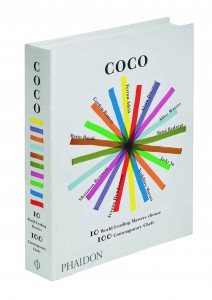
COCO
When Phaidon called to let me know I was invited to be in this book I had no idea what it was about. Then, I recieved a nice letter explaining how the decisions were made to chose the chefs. It was chefs choosing chefs! Not just any chefs but the power houses of the industry internationally. I am honored and in awe to be in the company of such great chefs from around the world. To be chosen to be in this great book by my mentor and elder statesman of offal, Fergus Henderson, is a great honor. To see more about the book, I’ve included the press release below, as well there is a link to pre order the book on amazon.
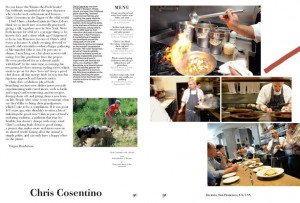
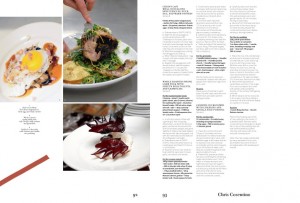
COCO
10 World Leading Masters Choose 100 Contemporary Chefs
Ferran Adrià (Spain), Mario Batali (USA), Shannon Bennett (Australia),
Alain Ducasse (France), Ferguson Henderson (UK), Yoshihiro Murato (Japan),
Gordon Ramsay (UK), René Redzepi (Denmark), Alice Waters (USA), and Jacky Yu (Hong Kong)
A mobile ice cream van in London. A Michelin-starred gastropub in New York. The dining program at the American Academy of Rome. A restaurant in a small village in Bali. A café in Tapei. A sandwich shop in Portland, Oregon. A mecca for offal obsessives in San Francisco. What do all of these seemingly disparate places have in common? They are where you will find some of the best chefs of today toiling away, and they are all in COCO: 10 World Leading Masters Choose 100 Contemporary Chefs (Phaidon Press; November 15, 2009; $49.95 hardcover), an unprecedented look at culinary movers and shakers from all corners of the globe that follows in the footsteps of Phaidon’s internationally popular 10×10 series.
The 100 chefs, creating the most innovative cuisine, include talent from Singapore to Spain and Australia to Athens, Georgia. Whether experimenting with new techniques and adventurous combinations or sticking to simple, delicious traditional dishes made with fresh, locally-sourced produce, these culinary artists have taken their craft to such impressive heights that they have captured the attention of these 10 top master chefs. With its vast and varied selection of recipes, COCO is an unrivaled snapshot of what is happening in current gastronomy.
Arranged alphabetically, COCO presents each chef over a gorgeous, full-color, four-page spread. Beginning with an inspiring and insightful essay from the chef curator explaining their pick, the chapter includes a brief bio, sample menu, and images of the restaurant, the kitchen, the chef at work and dishes, as well as accompanying recipes. While the selected chefs hail from different parts of the world and cook very different styles of cuisine in very different types of restaurants, they take their ingredients and methods equally seriously, perfecting their work. They have been selected not only for their food, but for their cooking philosophy and also the way they run their kitchens and how their restaurants have contributed to the culinary world-at-large. As Mario Batali writes in his essay on Hugh Acheson, “Making great food is only the half of it. Real energy and true talent come through when food is thoughtful.”
Part cookbook, part international restaurant guide and part who’s who in the international food scene, COCO showcases recipes that are completely doable like David Chang’s (Momofuku, New York City) Mackerel with Kimchi Puree, Oyster and Radish, Allison Vines-Rushing’s (MiLa, New Orleans) Sweet Potato Pappardelle with Roasted Shitake Mushrooms and Shaved Sheep Cheese, and Russell Moore’s (Camino, Oakland, CA) Lamb Leg a la Ficelle with Braised and Grilled Ribs, Merguez Sausage, and Fresh Shell Beans and the purely aspirational like Mads Refslund’s (MR, Copenhagen) Burning Fields: Aroma and Textures of Burning Fields, Glynn Purnell’s (Purnell’s, Birmingham) Duck Rolled in Licorice Charcoal, Japanese Black Rice, Tamarind, Licorice Puree, Salsify, and Green Beans, and José Avillez’s (Tavares Rico, Lisbon) Roasted Pigeon, A “Ferrero Rocher” of Truffle and Foie Gras, Sautéed Chard, and a Cinnamon-Flavor Sauce. The culinary icons also each share one of their definitive recipes such as Alice Waters’ Chicories Salad with Brandade Toast, Fergus Henderson’s Roast Bone Marrow and Parsley Salad and Mario Batali’s Two-Minute Calamari, Sicilian Lifeguard Style.
And of course, a culinary book this visionary in scope wouldn’t be complete without a restaurant guide so that readers may travel the world to experience the gastronomic artistry for themselves.
TITLE: COCO: 10 World Leading Masters Choose 100 Contemporary Chefs
PUBLISHER: Phaidon
PUB DATE: November 15, 2009
PAGES: 440
November 2, 2009 on 1:56 pm | In Blog, Press, Resources | 5 Comments
Essential Cooking Equipment
Brittany Risher; Chris Cosentino photo by Lisa Hamilton
Use this list to stock your kitchen, and you’ll have all the tools you need to prepare an impressive meal
 Sure, Iron Chef’s Kitchen Stadium is stocked with every pan, knife, and other food gadget ever made. But chances are you’ll never attempt a cookdown with Mario Batali. What you need are the essentials. To help ensure that you have the things you truly need, we talked to Chris Cosentino, chef partner at Incanto in San Francisco and partner and owner of Boccalone (boccalone.com), an artisan salumi business.
Sure, Iron Chef’s Kitchen Stadium is stocked with every pan, knife, and other food gadget ever made. But chances are you’ll never attempt a cookdown with Mario Batali. What you need are the essentials. To help ensure that you have the things you truly need, we talked to Chris Cosentino, chef partner at Incanto in San Francisco and partner and owner of Boccalone (boccalone.com), an artisan salumi business.
The first step, he says, is to determine what your cooking goal is. “”There are so many pieces of equipment,” Cosentino says, “but you don’t need to worry about them all. If you know what you want to do, you can set up your kitchen accordingly.”
Here are the things he recommends the average at-home chef should have on hand to make anything from a fast bite after work to an impressive dinner date.
1. A Cutting Board
 “Having a proper wooden cutting is where everything is going to start from,” says Cosentino, who likes Boos cutting boards (johnboos.com). Go with wooden—although plastic is non-porous, you’re likely to put deeper knife marks into it, making it hard to clean and disinfect. And bacteria thrive in those scars.
“Having a proper wooden cutting is where everything is going to start from,” says Cosentino, who likes Boos cutting boards (johnboos.com). Go with wooden—although plastic is non-porous, you’re likely to put deeper knife marks into it, making it hard to clean and disinfect. And bacteria thrive in those scars.
Also, wood won’t dull your knives as quickly, and it draws bacteria below the surface—and therefore away from your food. In fact, a study by researchers at the University of California-Davis Food Safety Laboratory found that used, scarred wooden cutting boards had almost the same amount of bacteria on their surfaces as new wooden ones.
2. Knives
 All you need are four: chef’s knife, paring knife, boning knife, and fillet knife. The paring knife is for smaller, precise work such as peeling, trimming, coring an apple, and sectioning an orange. The chef’s knife is your Jack-of-all-trades. Use it to chop, mince, and slice vegetables, fruit, herbs, and meat. The boning and fillet knives are self-explanatory.
All you need are four: chef’s knife, paring knife, boning knife, and fillet knife. The paring knife is for smaller, precise work such as peeling, trimming, coring an apple, and sectioning an orange. The chef’s knife is your Jack-of-all-trades. Use it to chop, mince, and slice vegetables, fruit, herbs, and meat. The boning and fillet knives are self-explanatory.
Cosentino likes Japanese knives because they hold an edge better, he says. When you’re shopping, be sure to pick up the knife and hold it as you’d use it. “When you hold it, is it like an extension of your hand, or is it like having your shoe on the wrong foot?” Cosentino says. “You should like the way the handle feels and the weight of the knife.” If it feels right in your hands, it’s a good choice.
3. A Slow Cooker
 “You want a cast-iron, enameled pot—what I call a braiser—to slow-cook items in,” says Cosentino, who has used his Calphalon slow cooker to do everything from make tomato sauce and jam to braise meat and cook a whole chicken. It’s extremely versatile (use it on the stovetop or in the oven) and easy to use: Just prep the ingredients the night before, put them into the pot before you leave for work in the morning, and when you come home, you have dinner. And, since the pot is heavy-bottomed, the heat is dispersed evenly, so you have less chance of burning your food.
“You want a cast-iron, enameled pot—what I call a braiser—to slow-cook items in,” says Cosentino, who has used his Calphalon slow cooker to do everything from make tomato sauce and jam to braise meat and cook a whole chicken. It’s extremely versatile (use it on the stovetop or in the oven) and easy to use: Just prep the ingredients the night before, put them into the pot before you leave for work in the morning, and when you come home, you have dinner. And, since the pot is heavy-bottomed, the heat is dispersed evenly, so you have less chance of burning your food.
4. Pans and Pots
 Keep things simple (and your cabinet uncluttered): again, four is the magic number. Start with a saucepot to cook soup in and a larger pot to cook pasta in. Then look for 8-inch and 10-inch sauté pans made out of a non-reactive material, such as cast iron or stainless steel. “Aluminum can react with acidity and change the flavor of foods like tomatoes and asparagus,” Cosentino says. He uses Calphalon in the restaurant kitchen and also recommends Demeyere cookware.
Keep things simple (and your cabinet uncluttered): again, four is the magic number. Start with a saucepot to cook soup in and a larger pot to cook pasta in. Then look for 8-inch and 10-inch sauté pans made out of a non-reactive material, such as cast iron or stainless steel. “Aluminum can react with acidity and change the flavor of foods like tomatoes and asparagus,” Cosentino says. He uses Calphalon in the restaurant kitchen and also recommends Demeyere cookware.
But you don’t necessarily need to buy your pans and pots individually—a set may be the best option. “If you want the basics to make beautiful meals, buy a set, and, boom, you have all the pans in the world you need,” Cosentino says. “As long as have a stove and electric or gas, you’re set.” They’re also cheaper and you’re more likely to find sales on sets than on separate items.
5. A Pepper Mill
 If you want your food to taste good, this overlooked item can make a big difference in flavor. Cosentino says to think about it this way: If you buy preground pepper at the store, who knows how long it’s been sitting there? And how long was it sitting prior arriving at your supermarket? He recommends grinding peppercorns with a Peugeot mill.
If you want your food to taste good, this overlooked item can make a big difference in flavor. Cosentino says to think about it this way: If you buy preground pepper at the store, who knows how long it’s been sitting there? And how long was it sitting prior arriving at your supermarket? He recommends grinding peppercorns with a Peugeot mill.
6. The Basics
Don’t overlook the obvious things such as a whisk, mixing bowl, spatula (Cosentino likes fish spatulas, which are good for both delicate and heavier foods), and the one thing no man can do without: a grill.
7. The Extras
Pass on the onion goggles, but if you have a few extra bucks, there are two nonessentials Cosentino thinks are worth it: a pizza stone and a Benriner mandolin (benriner.com).
 - Buy a stone, and all you need to do is hit the grocery store for prepared dough and the toppings of your choice, and you’re ready to make a pie that tastes better—and has less grease and fewer calories—than delivery. “A pizza stone helps keep the oven temperature constant,” Cosentino says, and that results in a perfect crust.
- Buy a stone, and all you need to do is hit the grocery store for prepared dough and the toppings of your choice, and you’re ready to make a pie that tastes better—and has less grease and fewer calories—than delivery. “A pizza stone helps keep the oven temperature constant,” Cosentino says, and that results in a perfect crust.
- Use the mandolin for an easy way to julienne vegetables or cut them into matchsticks. You can quickly slice tons of vegetables and fruit with it, so you don’t need a knife, and they’ll all be uniform size, which can turn an ordinary salad into an impressive-looking course when you invite your girlfriend over for dinner.
August 18, 2009 on 9:47 am | In Blog, Offal, Press, Videos | 3 Comments

A few years ago Anthony Bourdain came to Incanto for dinner and my buisneess partner Mark Pastore wrote a great letter called “when royality comes calling”. It was a crazy day when he came for dinner a few years back nervous and star struck I cooked and cooked, hoping not to blow it. Now fast forward to this march an I get a phone call from zero point zero production that they want to film No Reserations. I am honored to be part of such a great show which has been stacking up the emmy nominations. Thanks to my team and all staff on hand the restaurant looked great on the show. Thanks!!
August 5, 2009 on 10:59 am | In Blog, Offal, Press, Recipes | 2 Comments
please check out the word of mouth NPR show I was interview by Virginia Prescott about offal cookery and the sustainability of it all.

Click on the image to hear the show.
July 31, 2009 on 12:55 pm | In Blog, Events, Press | No Comments
On august 5th at 1pm PDT/ 3pm EST I will be interview live on:
WWW.wherefoodiesgo.com
So if you have any questions or things you might want to know make sure you get your questions in.
July 31, 2009 on 11:32 am | In Blog, Press, Recipes | 1 Comment
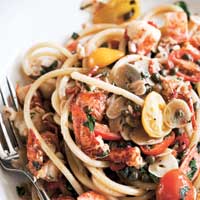
Photo credit:
Deft Chef
At Incanto, Chris Cosentino uses locally raised ingredients–including his own—to create classic Italian dishes
By Michael Frank
When Cosentino couldn’t source the meat he wanted for his restaurant, he didn’t change his recipes—he changed the system. That’s typical of the 37-year-old executive chef of the widely acclaimed Incanto, in San Francisco’s Noe Valley, which specializes in Italian cuisine—and an array of meat and fish dishes that some would term adventurous. “Things like blood sausage, jowl, salumi, headcheese—these are as old as time in Italian cuisine,” Cosentino says. He explains that his need for these and other unique items on his menu prompted in-house dry curing, which snowballed into a business all its own. Boccalone Salumeria, purveyor of “tasty salted pig parts,” as the firm’s tagline reads, now features both online and storefront distribution (the latter in San Francisco’s renowned market in the Ferry Building).
Cosentino doesn’t see anything extraordinary in taking over an entire USDA meat-processing facility in Oakland to stock Boccalone, just as he doesn’t think it’s challenging to cook recipes that span the breadth of Italy. “I’m just cooking seasonally,” he says. Maybe after racing 24-hour solos on a singlespeed against pros—as Cosentino did during the late 1990s and early 2000s—he learned to appreciate stiff challenges. Or maybe it’s just that he’s used to taking chances, like in 2001, when he quit his career as a chef to race full time. “I’d get up at 5 a. m., ride, work five hours at the farmers’ market, then ride home— and then get in 120 miles.”
Those farming relationships—”those were my sponsors. The ranchers gave me meat, the farmers gave me vegetables”—are still the backbone of Cosentino’s success at Incanto. “Your food doesn’t come from Whole Foods,” he says. “Food is somebody’s livelihood; getting to know who grows your tomatoes is no different than getting to know the owner of your bike shop.”
In case you missed it, Cosentino isn’t shy about his agenda. “We’ve lost the basics of food and family,” he says, “of traditional recipes and of understanding how to cook by using every part of an animal. People say that’s just theater, that I’m obnoxious by suggesting people try warthog asshole or a piece of foie gras. I say judge me by what’s on the plate, by how it tastes.”
Post-Long-Ride Feast
Lobster Puttanesca
Salt, to taste
2 1-lb. lobsters
2 tablespoons extra-virgin olive oil
2 tablespoons garlic, slivered
2 red Fresno chilies, sliced
1 tablespoon capers
22 anchovy fillets, salted and packed in olive oil
1/3 cup fresh basil, roughly chopped
1/3 cup fresh mint, roughly chopped
1 pint cherry tomatoes, cut in half
Freshly ground black pepper
1 tablespoon fresh lemon juice
1/2 lb. bucatini pasta
This is a fast-cooking dish, so have all ingredients ready before you begin. Prepare an ice-water bath to shock the lobsters after cooking.
In a pot, bring to a boil one teaspoon of salt and enough water to cover the lobsters. (At this time, boil another pot of water to cook the pasta.) Add the lobsters and blanch for four minutes; remove and add to the water bath. When the lobsters are cool, remove the meat from the tail, claws and knuckles. Cube it and set aside. In a saute pan over medium heat, add the olive oil, garlic and chilies, then the capers and anchovies, stirring constantly for about two minutes. Add the lobster meat and cook for two minutes (and put the pasta into the boiling water; cook until al dente), then add the herbs and tomatoes. Finish with lemon juice and extra olive oil if desired.
Add salt and pepper to taste, and serve immediately over pasta. Serves: 2
CALORIES PER SERVING 1,145
FAT 19.6g
CARBS 184g
PROTEIN 58g
More From Cosentino
WORST RACE INJURY: “I crashed at night in Winter Park [Colorado] and popped my patella. They popped it back, and I finished.”
CURRENT BIKE: A Retrotec Half
FUTURE BIKE: “Inglis is building us a hot-dog bike with a warming chamber so we can serve Boccalone hot dogs at the ballpark.”
EAT AT INCANTO: 1550 Church Street, San Francisco; 415/641-4500; incanto.biz
July 22, 2009 on 9:38 am | In Blog, Events, Press | 2 Comments
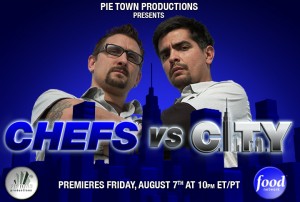
Here it is, the time is nearing for my new show to premiere. check it out its a lot of fun working with Aaron on these challenge. For more info on the show check out food network by clicking on the picture of Aaron and I.
July 14, 2009 on 7:46 am | In Blog, Offal, Press | 1 Comment
05.25.09
On a recent spring day we asked Chris Cosentino—the offal-loving chef behind San Francisco’s Incanto restaurant and Boccalone Salumeria—to tell us every single thing he ate and drank over the previous 24 hours. In the first installment of our My Day on a Plate series, Cosentino reveals there’s more to his free-ranging, nonstop appetite—and his cooking—than coxcombs, pig’s heads, and tripe. Fourteen double espressos, anyone?
Incanto’s Chris Cosentino (right) and Mark Pastore examine the wares at their Boccalone salumi factory in Oakland, California.
I have a four-year-old son, and you wake up pretty early when there’s a kid in the house. I like to start my day with an espresso made from Blue Bottle coffee. We have a Rancilio Silvio, which is a dynamite little machine, all stainless steel. James Freeman from Blue Bottle—our sons like to play together—set up a proper grinder in our house yesterday, which was a birthday present from my wife.
I got to Incanto yesterday at 8:15 in the morning; we were in full-on Sunday brunch mode. I cured Arctic char in grappa and fennel, since wild salmon isn’t available right now, so I was slicing that and tasting away. And then there was all the other brunch stuff—the blood sausage, the Easton’s sausage, about 30 pieces of pancetta. I was tasting everything all morning.
Did I do lunch? Not really. I eat staff meals occasionally, but for me there’s never much of a sit-down-and-eat lunch. We did whole roasted lamb neck yesterday with baby fava beans, so I did eat a bunch of those, along with some house-ground whole-wheat polenta, and then I just kept grazing all afternoon. I knocked back about 14 double espressos, which is typical. Our coffee comes from Mr. Espresso, a great wood-fire roaster over in Oakland. I drank lots and lots of sparkling water (we have our own filtration system here), and I ate three hot-cross buns, which we make in-house, with strawberry jam. And then I drank a strawberry Italian soda we make here, too. Way too much sweet stuff–my gut hurts from all that shit!
Then I ate some ham with mint salsa, which we presented for lunch and dinner yesterday, some sliced leg of spring lamb, and some peas with honey and a knife. You know what that is, right? It’s from the first chapter of Winnie the Pooh:
I eat my peas with honey
I’ve done it all my life
It makes the peas taste funny
But it keeps them on the knife!
We serve them at Incanto with a honeycomb. I had a bowl of those.
Finally, at 8 o’clock, I actually sat down and ate with my family. I had two glasses of Bortolomiol, a brut Prosecco, and then I had a glass of white from Ravello on the Amalfi Coast, and I ended up having our mint malfatti, which we serve with beef brasato—beef braised with tomato, red wine, and mint stems. You fold the mint into it at the end. People don’t know this, but mint is the number-one-used herb in Italy. My son made the malfatti with Hector, my prep guy. He wanted to eat what he made. What else did I have? Not much. Oh, I had an Anchor Steam.
I didn’t get home so late last night, maybe around 10:30. Sunday is usually my family day, but I pulled a good 14 at the restaurant. I had another beer when I got home, a Lagunitas IPA. I’ve stopped eating anything super late at night. I’m going to do a 60-mile ride on my bike next week, so I’ve been trying to get back into shape.
So what did I have this morning? More Blue Bottle coffee, but this time it was from the new grinder. Pretty great. Then I took my son to school, and came to work. I’m always the first cut on our focaccia, so I had that. And two more espressos. And since I’ve been on the phone with you, I’ve tasted pickling liquid, lamb fat, and two kinds of crostini, and I’ve had a lavender-brittle-and-chocolate cookie. Manfred here called me fat and that’s why I had to let out my girdle. That’s also why you can’t hear me half the time we’re talking. I’m always chewing.
As told to Mark Rozzo
Photograph by Craig Lee/San Francisco Chronicle
« Previous Page —
Next Page »



 Sure, Iron Chef’s Kitchen Stadium is stocked with every pan, knife, and other food gadget ever made. But chances are you’ll never attempt a cookdown with Mario Batali. What you need are the essentials. To help ensure that you have the things you truly need, we talked to Chris Cosentino, chef partner at Incanto in San Francisco and partner and owner of Boccalone (
Sure, Iron Chef’s Kitchen Stadium is stocked with every pan, knife, and other food gadget ever made. But chances are you’ll never attempt a cookdown with Mario Batali. What you need are the essentials. To help ensure that you have the things you truly need, we talked to Chris Cosentino, chef partner at Incanto in San Francisco and partner and owner of Boccalone ( “Having a proper wooden cutting is where everything is going to start from,” says Cosentino, who likes Boos cutting boards (
“Having a proper wooden cutting is where everything is going to start from,” says Cosentino, who likes Boos cutting boards ( All you need are four: chef’s knife, paring knife, boning knife, and fillet knife. The paring knife is for smaller, precise work such as peeling, trimming, coring an apple, and sectioning an orange. The chef’s knife is your Jack-of-all-trades. Use it to chop, mince, and slice vegetables, fruit, herbs, and meat. The boning and fillet knives are self-explanatory.
All you need are four: chef’s knife, paring knife, boning knife, and fillet knife. The paring knife is for smaller, precise work such as peeling, trimming, coring an apple, and sectioning an orange. The chef’s knife is your Jack-of-all-trades. Use it to chop, mince, and slice vegetables, fruit, herbs, and meat. The boning and fillet knives are self-explanatory. “You want a cast-iron, enameled pot—what I call a braiser—to slow-cook items in,” says Cosentino, who has used his Calphalon slow cooker to do everything from make tomato sauce and jam to braise meat and cook a whole chicken. It’s extremely versatile (use it on the stovetop or in the oven) and easy to use: Just prep the ingredients the night before, put them into the pot before you leave for work in the morning, and when you come home, you have dinner. And, since the pot is heavy-bottomed, the heat is dispersed evenly, so you have less chance of burning your food.
“You want a cast-iron, enameled pot—what I call a braiser—to slow-cook items in,” says Cosentino, who has used his Calphalon slow cooker to do everything from make tomato sauce and jam to braise meat and cook a whole chicken. It’s extremely versatile (use it on the stovetop or in the oven) and easy to use: Just prep the ingredients the night before, put them into the pot before you leave for work in the morning, and when you come home, you have dinner. And, since the pot is heavy-bottomed, the heat is dispersed evenly, so you have less chance of burning your food. Keep things simple (and your cabinet uncluttered): again, four is the magic number. Start with a saucepot to cook soup in and a larger pot to cook pasta in. Then look for 8-inch and 10-inch sauté pans made out of a non-reactive material, such as cast iron or stainless steel. “Aluminum can react with acidity and change the flavor of foods like tomatoes and asparagus,” Cosentino says. He uses Calphalon in the restaurant kitchen and also recommends Demeyere cookware.
Keep things simple (and your cabinet uncluttered): again, four is the magic number. Start with a saucepot to cook soup in and a larger pot to cook pasta in. Then look for 8-inch and 10-inch sauté pans made out of a non-reactive material, such as cast iron or stainless steel. “Aluminum can react with acidity and change the flavor of foods like tomatoes and asparagus,” Cosentino says. He uses Calphalon in the restaurant kitchen and also recommends Demeyere cookware. If you want your food to taste good, this overlooked item can make a big difference in flavor. Cosentino says to think about it this way: If you buy preground pepper at the store, who knows how long it’s been sitting there? And how long was it sitting prior arriving at your supermarket? He recommends grinding peppercorns with a Peugeot mill.
If you want your food to taste good, this overlooked item can make a big difference in flavor. Cosentino says to think about it this way: If you buy preground pepper at the store, who knows how long it’s been sitting there? And how long was it sitting prior arriving at your supermarket? He recommends grinding peppercorns with a Peugeot mill. - Buy a stone, and all you need to do is hit the grocery store for prepared dough and the toppings of your choice, and you’re ready to make a pie that tastes better—and has less grease and fewer calories—than delivery. “A pizza stone helps keep the oven temperature constant,” Cosentino says, and that results in a perfect crust.
- Buy a stone, and all you need to do is hit the grocery store for prepared dough and the toppings of your choice, and you’re ready to make a pie that tastes better—and has less grease and fewer calories—than delivery. “A pizza stone helps keep the oven temperature constant,” Cosentino says, and that results in a perfect crust.


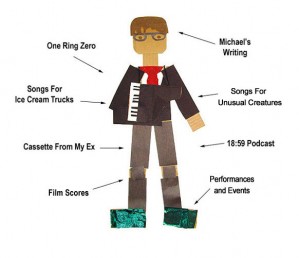



 Show the world you're an offal eater.
Show the world you're an offal eater. Become a Fan
Become a Fan